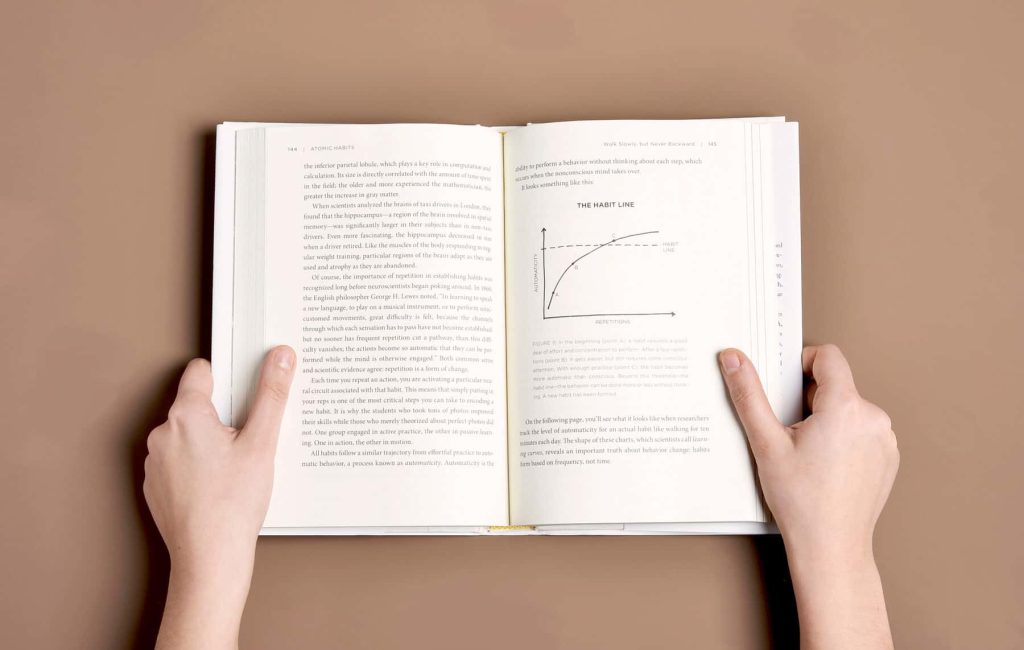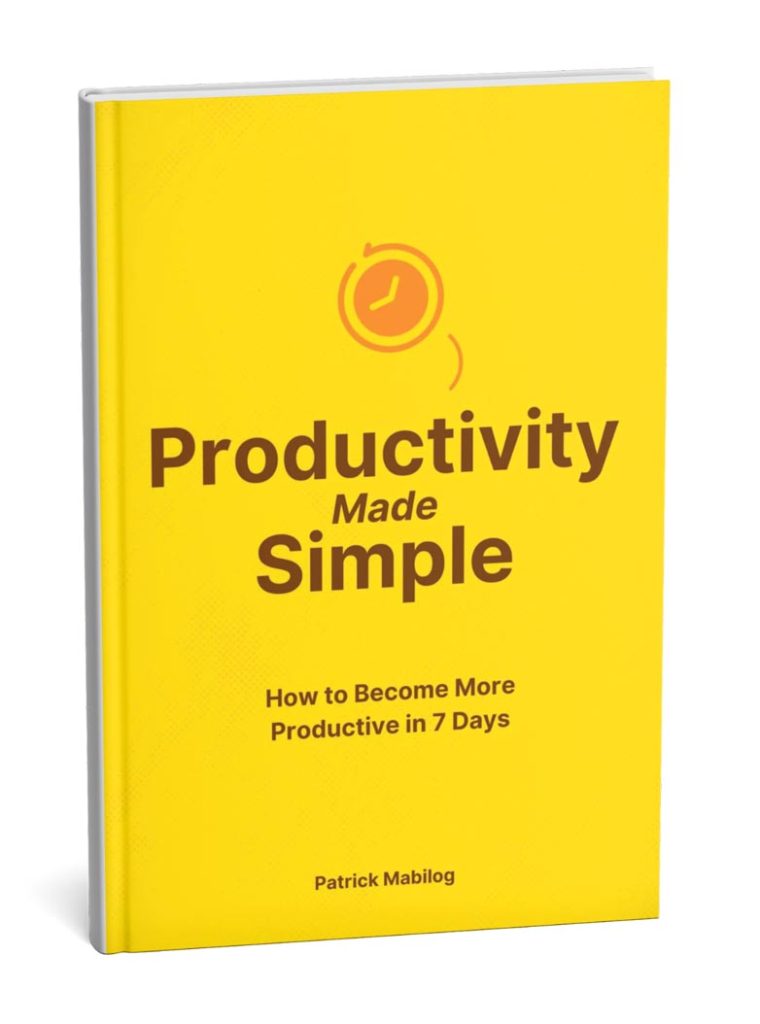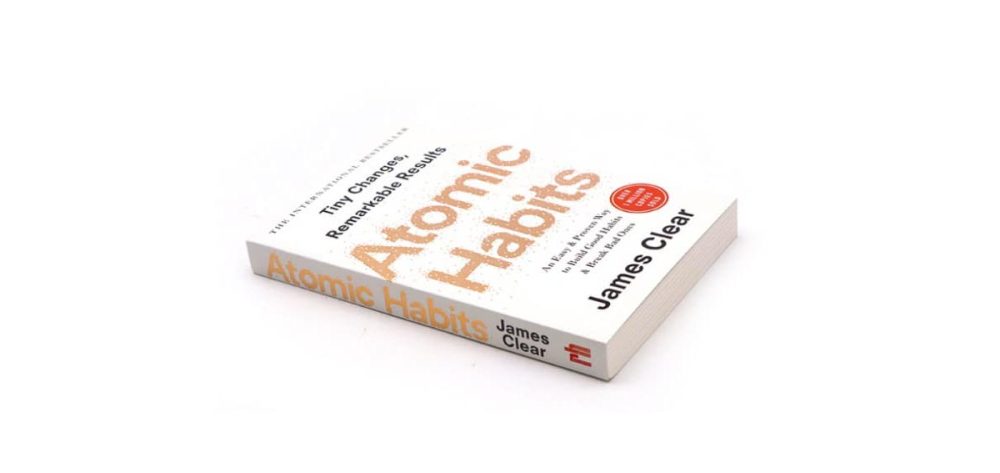This “Atomic Habits” summary will provide you with some key summaries, insights, and some of my personal learnings from the book. If you haven’t read the book yet or you just want to get the key ideas, then read on.
Most of us have a love-hate relationship with our own habits. We seem to find it hard to break bad ones and form good ones. On one side, you want to form better habits so you can grow more, get ahead, live healthier, and become happier. But then comes the reality check— habits are hard to break.
That’s why Atomic Habits by bestselling author has become such a phenomenon in the self-help and productivity world. I’m going to share some key insights from the book that have helped me and will— hopefully— help you in some way too.
About Atomic Habits by James Clear
“Atomic Habits: An Easy & Proven Way to Build Good Habits & Break Bad Ones” is a book with one clear objecitve— to help readers achieve positive results through the power of small habits.
I’ve always been an entrepreneur. Five years ago, I co-founded a growth marketing agency while operating as the Chief Operations Officer of Chinkee Tan’s company, Team POsitive. Life became quite overwhelming. You always have dozens of client requests to manage, Zoom calls with prospects, fires to put out, administrative work, and so on.
Around the point when I was overwhelmed to the bone and struggling to fit work in the limited 24 hours in the day, I landed on a podcast interview with James Clear. I found his insights immensely valuable and actionable (important if you want to see results). I later picked up his book, which would shape both my personal habits and those within my organization.
Clear’s central premise in Atomic Habits revolves around the idea that tiny changes, compounded over time, lead to significant transformations. Instead of focusing solely on setting big goals, Clear emphasizes the importance of refining daily habits to achieve sustainable progress.
What stood out with Atomic Habits’ approach from other self-help books from the get-go is Clear’s pragmatic approach. He doesn’t just preach the importance of habits; he provides actionable strategies backed by scientific research to implement them effectively.
“You do not rise to the level of your goals. You fall to the level of your systems.”
James Clear, “Atomic Habits”
Clear looks into the psychology behind habit formation and also explains why we do what we do and how we can make lasting changes. His framework of cue, craving, response, and reward offers a comprehensive understanding of habit loops, empowering readers to break bad habits and cultivate positive ones.
Throughout the book, Clear emphasizes the importance of environment in shaping behavior. This resonated deeply with me as a business owner. It highlighted the significance of fostering a culture that promotes positive habits among employees.
Unlock Key Book Insights in 15 Minutes with Sumizeit
Get essential lessons, insights, and strategies with bite-sized book summaries. Sumizeit helps you save time and stay ahead with expert-curated summaries from top business books.
Sign up today and start learning in just 15 minutes a day!
Who is James Clear?

James Clear is a renowned author, speaker, and productivity expert known for his work on habit formation and behavior change. With a background in biology and business, Clear combines scientific research with practical insights to help individuals and organizations achieve their goals.
Clear’s journey into the world of habit formation began after a near-fatal accident in his teenage years, which led him to reevaluate his habits and lifestyle choices. Through years of experimentation and study, Clear developed a deep understanding of human behavior and the mechanisms underlying habit formation.
He shares his findings through his writing, speaking engagements, and online platform. As a business owner himself, James brings a unique perspective to his work, offering practical strategies for improving productivity. His insights have resonated with millions of readers worldwide, making him a trusted authority in the field of habit formation and behavior change.
Atomic Habits Chapter Summaries
As I always like to do (because readers seem to love them), I take the entirety of each chapter and give you a look at what each section communicates.
Chapter 1: The Surprising Power of Atomic Habits
In the first chapter, James introduces the concept of atomic habits. This is what he calls the small changes that compound over time to produce significant results. He emphasizes the importance of focusing on systems rather than goals and explains how tiny improvements can lead to remarkable transformations.
Chapter 2: How Your Habits Shape Your Identity (and Vice Versa)
Second, Clear explores the relationship between habits and identity, highlighting how our behaviors reinforce our self-image and vice versa. He discusses the concept of “identity-based habits” and explains how changing our beliefs about ourselves can lead to lasting habit change.
Chapter 3: How to Build Better Habits in 4 Simple Steps
At this point, we get introduced to James’ popular framework for habit formation. There are four parts to the system— cue, craving, response, and reward. He explains each step in detail and provides practical strategies for implementing them in everyday life.
Chapter 4: The Man Who Didn’t Look Right
This chapter shares the story of Jerry Seinfeld and his commitment to daily writing. What I picked up from Chapter 4 the most is the power of consistency in habit formation. Clear discusses the importance of tracking progress and staying committed to small actions over time.
Chapter 5: The Best Way to Start a New Habit
This part gives you advice on how to make habit formation easier by starting small and gradually increasing the difficulty. James Clear uses this part to explain the concept of “habit stacking” and provides examples of how to incorporate new habits into existing routines.
“People get so caught up in the fact that they have limits that they rarely exert the effort required to get close to them.”
James Clear
Chapter 6: Motivation is Overrated; Environment Often Matters More
In this chapter, you learn the big role your environment plays in shaping your behavior. Clear suggests making small changes to our surroundings to support our habits, something that honestly helped me a lot. I always thought that you just had to deal with the environment around you, no matter what— noisy kids, messy room, inbox with 5,000 unread emails. But Clear asserts the importance of designing an environment that promotes desired behaviors and minimizes friction.
Chapter 7: The Secret to Self-Control
Clear explores the concept of willpower and self-control. This chapter also debunked the biggest myth about motivation that I believed forever. He suggests reframing habits as choices and creating systems that automate good decisions are what will ultimately reduce the need for willpower.
Chapter 8: How to Make Good Habits Inevitable and Bad Habits Impossible
You’ll get strategies for making good habits more attractive and bad habits less appealing in this chapter. You also learn the concept of “temptation bundling,” pairing enjoyable activities with less desirable tasks to increase motivation.
Chapter 9: The Cardinal Rule of Behavior Change
Making habits satisfying by linking them to immediate rewards. This chapter discusses the role of Dopamine in habit formation and suggests finding ways to make desired behaviors more enjoyable.
Chapter 10: How to Stick with Good Habits Every Day
Clear offers advice on how to stay consistent with habits over the long term. One thing I implemented from this chatper was creating a habit contract. Other things you can do is joining a community and focusing on the process rather than the outcome to maintain motivation.
Chapter 11: How an Accountability Partner Can Change Everything
Clear discusses the benefits of accountability in habit formation and suggests finding a partner to hold you to your commitments. This isn’t new, but it’s a good reminder. Habits are formed best when someone holds you to a standard.
Chapter 12: The Truth About Talent
Clear explores the role of genetics in talent and skill development. One emphasis here is the importance of deliberate practice and consistent effort. James suggests focusing on improving habits rather than relying solely on natural talent.
Chapter 13: The Goldilocks Rule: How to Stay Motivated in Life and Work
The “Goldilocks Rule” suggests that humans are most motivated when tasks are neither too easy nor too difficult. He discusses the importance of finding the right level of challenge to stay engaged and motivated. I kind of liken this to the idea of Flow State, which Mihaly Csikszentmihalyi said happens when you have the perfect mix of challenge and enjoyment.
Chapter 14: The Downside of Creating Good Habits
There are potential downsides to habit formation. I appreciated this chapter because it just made the idea of habit-building more real. Two downsides I picked up were rigidity and complacency. That’s why periodically reassessing our habits helps us see if they continue to serve us effectively. If not, it’s time to make new habits.
Chapter 15: How to Break a Bad Habit (and Replace It with a Good One)
This chapter has many practical strategies for breaking bad habits and replacing them with healthier alternatives. Some ideas that stood out most for me were identifying triggers, disrupting the habit loop, and finding healthier ways to satisfy underlying cravings.
Chapter 16: The Best Way to Start a New Habit
Clear revisits the topic of habit formation and offers additional strategies for making new habits stick. He emphasizes the importance of repetition, consistency, and self-compassion in the habit-building process.
My Key Takeaways from Atomic Habits

No doubt, there’s so much to learn from James’ Atomic Habits. Allow me to share the three most important points to me:
- Focus on Systems, Not Goals: Clear’s emphasis on building systems rather than solely focusing on goals was eye-opening. Since I started concentrating on small, consistent actions that form habits, I’ve learned how to create more sustainable progress over time. This perspective shift has helped me prioritize daily actions that contribute to long-term success rather than becoming fixated on distant objectives.
- The Power of Environment: Clear’s insights into the influence of environment on behavior really struck a chord with me. Since I started optimizing my surroundings to support desired habits and minimize friction, I now find it easier to stay on track with our goals. Also, as a leader in my organization, I’ve realized the importance of fostering a workplace culture and physical environment that encourages positive behaviors and reinforces our organizational values. I’ve shared concepts from James Clear countless times with the people under my leadership.
- Consistency is Key: Perhaps the most profound takeaway for me overall was the importance of consistency in habit formation. Again, nothing new. But it’s still gold. Specifically, it was Clear’s examples of how small, repeated actions compound over time reinforced the idea that sustainable change comes from daily practice. This reminder to prioritize consistency in both personal and professional habits has been invaluable in driving continuous improvement and growth within my organization.
Final Thoughts
Atomic Habits is a compelling read for anyone seeking to optimize their personal and professional lives. In many ways, I saw the book as an encyclopedia of productivity practices. There are so many practical insights, coupled with real-life examples and actionable strategies. I honestly don’t think I’ll be able to apply them all in the next decade. But that’s part of what makes Atomic Habits great.
At times though, the book does feel overwhelming. I don’t recommend going through it in a short span of time. Take the time to really go through each chapter and pick up things you can start implementing. Focus on maybe two or three action points per week then build up with time. Some will stick, some won’t. See what works for you.
But it’s that richness that makes Atomic Habits a valuable resource for business owners, employees, students, and practically anyone striving for continuous improvement.
Check out these next summaries to read:
- Who Moved My Cheese Summary, Key Takeaways, and Reflections
- Leaders Eat Last Summary: Get the Gist in 5 Minutes
- The 5 AM Club: Summary, Takeaways, and Author






